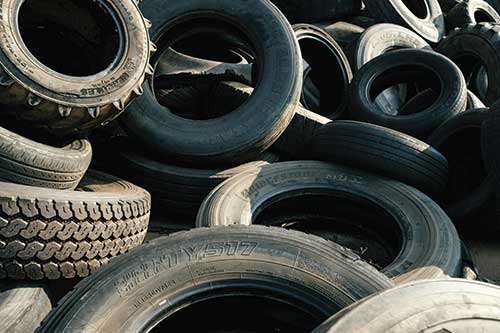The problems of changing a flat tire
 On my way to my father-in-law’s house to gather his newspaper and make his coffee, I spotted a car, its emergency flashers on, pulled up at the entrance to the neighborhood. Nobody had stopped.
On my way to my father-in-law’s house to gather his newspaper and make his coffee, I spotted a car, its emergency flashers on, pulled up at the entrance to the neighborhood. Nobody had stopped.
Standing beside the car was its driver, a young man in a mail carrier’s uniform. I stopped. The man had that recognizable look of quiet desperation that comes over us all when we are suddenly saddled with a broken-down car, when we are at once completely “there,” sizing up our situation, and variously “elsewhere,” worrying about whatever larger problems this problem might produce.
A still-attached but torn and flattened tire told me in an instant that he had hit that spot, an irregular curb just before you enter my town of Oakwood from the north, quite near UD’s campus. He was not the first to hit that curb, and his tire was equally not the first that I had changed in that location. Somehow, motorists in need, not unlike stray cats or kids with slipped bicycle chains, just seem to attract my eye.
Oakwood residents all know that spot. We deftly avoid it; we warn our children of it when they are learning to drive. We avoid that curb and follow an “insider’s” path. Others from elsewhere are not so aware, and thus, often, are the unwitting victims of an infrastructural oddity.
The man had a spare but not a jack. I knew that there was one in my father-in-law’s new Chevrolet, just a few feet away. So I told the man that I could solve his problem of changing the tire and, it seemed, his larger, “elsewhere” problem — working out with his boss how to get his mail route covered.
Kneeling beside the car, I was at work with the new jack and the de rigueur knuckle wounding, sotto voce imprecations, and that eureka of, “Oh, now that’s how this works!” With technology conquered, language cleansed, knuckles still functioning, I was joined by the man in changing his tire. Actually, I continued at work and he was watching, admitting that he had never changed a tire. “Not a problem,” I explained. There were other problems. Liberating lug nuts required more than a good bit of middle-aged weight applied in repeated maneuvers to the lug wrench. And since we were on an incline, we needed something, other than the emergency break, to chock and still the back wheels. Again, “Not a problem,” I shrugged it off. Always in these moments you improvise. The damaged tire and wheel, once off the car, were pressed into this last useful role.
Neither of these “tricks” of changing a tire was known to the much younger man, but we both appreciated the irony of the useless tire suddenly becoming useful.
Minutes later the “donut” was on the rim, the car was lowered, the lug nuts were safely tightened. But there was low air pressure in the spare. Not a problem, or so I thought. I told the now-readied motorist to take it slow, drive up to my friends at Dayton Tire, and have them put air in the tire. “Easy,” I expressed. “They do that for me all the time.”
But from a certain, telling look in the man’s eyes, I could discern that he was apprehensive about asking for such a favor at a shop where he was a stranger. Again, not a problem; I rang up Dayton Tire, where I’m known, and Tony, Rob and their crew were graciously expecting my non-local mail carrier.
The carrier shook my hand, smiled and said, “Thank you. Today, I’ve met a good Samaritan.” He then got behind the wheel, but then stepped back out of his car and said, “You know, Brother,” surprising even himself, it seemed, in choosing to address me so, “when you pulled up, I thought the problem I feared had just begun.”
I grasped what he meant. Without saying anything further, he and I knew that less right there than all around us was a problem — historic, sad and ugly — a problem far more damaging, depressing and deflating than a flattened tire.
I didn’t know what to say as we stood there.
And neither did he say another word. We just shook hands again, and the Black man drove off to Dayton Tire.
Roger J. Crum is a professor of art history. A specialist in Italian Renaissance art, he was also one of the faculty responsible for the design of the Martin Luther King Jr. memorial on UD’s library lawn.